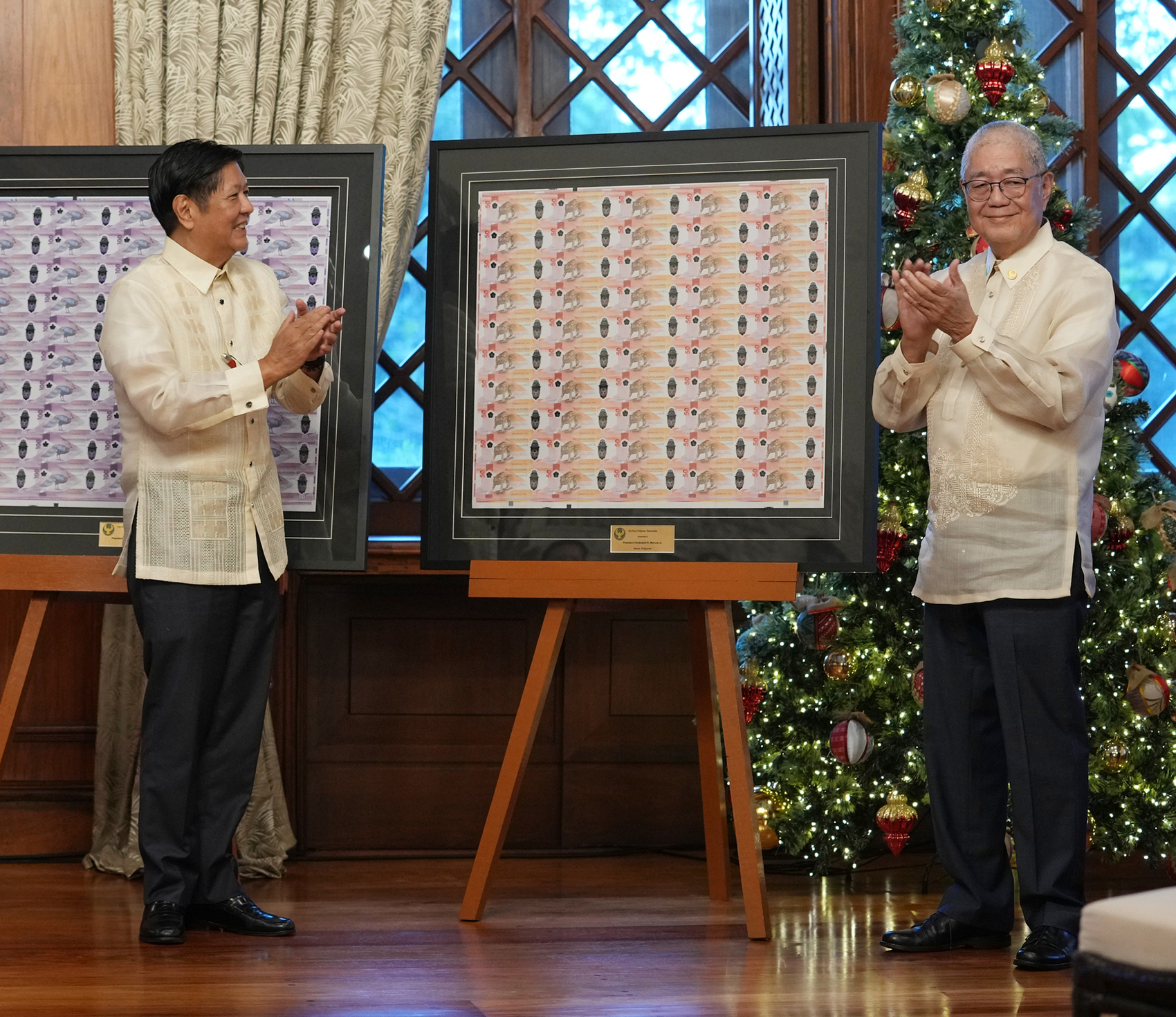President Ferdinand R. Marcos Jr. has recently accepted the “First Philippine Polymer Banknote Series” from Bangko Sentral ng Pilipinas (BSP) Governor Eli M. Remolona, Jr. at Malacañang Palace. The series comprises denominations of ₱1,000, ₱500, ₱100, and ₱50, with the ₱1,000 note having been introduced in April 2022.

Launch a historic moment for PH
“This is a historic moment for our country. It builds on the success of the ₱1,000 polymer note introduced in April of 2022 and aligns with the global best practice of updating currency features every 10 years,” President Marcos said.
The new banknotes feature images of unique Philippine flora and fauna, as well as traditional Filipino textile designs, reflecting the country’s rich biodiversity and cultural heritage.
“Polymer banknotes are designed to keep up with the demands of everyday life. Unlike paper bills, which wear out after about a year or a year and a half, polymer banknotes can last up to seven and a half years, five times longer,” the President added. “And that means that we no longer need to replace them as often, saving money, cutting down on waste, and making a meaningful contribution to protecting the environment.”
Governor Remolona, for his part, emphasized the significance of the new series, stating, “The polymer series raises awareness of the country’s threatened species, serves as a symbol of Filipino identity, and fosters national pride.”
Earlier this year, the BSP announced that the 1000-Piso polymer banknote had won the High Security PrintingTM Asia’s (HSPA) “Best New Banknote Award” for 2023. The award was announced in Colombo, Sri Lanka last December 5, 2023.

Photo shows Pres. Marcos and BSP Governor Remolona (6th and 7th from right) together with (from left) BSP Deputy Governor Elmore O. Capule, Assistant Governor Mary Anne P. Lim, Deputy Governor Bernadette Romulo-Puyat, Deputy Governor Chuchi G. Fonacier, as well as Monetary Board Members Benjamin E. Diokno, Rosalia V. De Leon, Romeo L. Bernardo, Walter C. Wassmer, and Jose L. Querubin.
BSP cites key features and benefits of Polymer banknotes
Polymer banknotes are considered smarter, cleaner, and stronger than traditional paper bills. They are equipped with advanced anti-counterfeiting features and have a smaller carbon footprint. Additionally, they are more resistant to dirt and bacteria, making them more hygienic.
A limited number of the new polymer banknotes will be released into circulation starting December 23, 2024, in the Greater Manila Area, with a broader rollout to follow. Initially, these banknotes can be withdrawn over the counter at banks. In the future, ₱500 and ₱100 polymer banknotes will also be available at automated teller machines (ATMs). Both polymer and paper banknotes (known as the New Generation Currency Series) can be used for various financial transactions.
Highlighting Philippine biodiversity and culture

The polymer banknotes feature unique and endangered Philippine flora and fauna, along with elements that showcase the country’s cultural heritage:
- ₱1,000: Philippine eagle and sampaguita flower
- ₱500: Visayan spotted deer and Acanthephippium mantinianum
- ₱100: Palawan peacock-pheasant and Ceratocentron fesselii
- ₱50: Visayan leopard cat and Vidal’s lanutan
These banknotes also retain familiar elements from the NGC series, highlighting the country’s natural beauty and indigenous designs.
A commitment to currency security and innovation
The BSP regularly updates the material, design, and security features of Philippine banknotes to combat counterfeiting.
This practice is common among central banks worldwide, with many redesigning their currency every ten years. The current NGC series of banknotes has been in circulation for over a decade.
While the new polymer banknotes feature unique Philippine flora and fauna, the BSP assures the public that banknotes featuring Filipino heroes will continue to circulate alongside the new series.
The BSP is committed to incorporating both historical figures and the country’s rich biodiversity into its banknotes, reflecting the nation’s vibrant numismatic tradition and fostering national pride.








